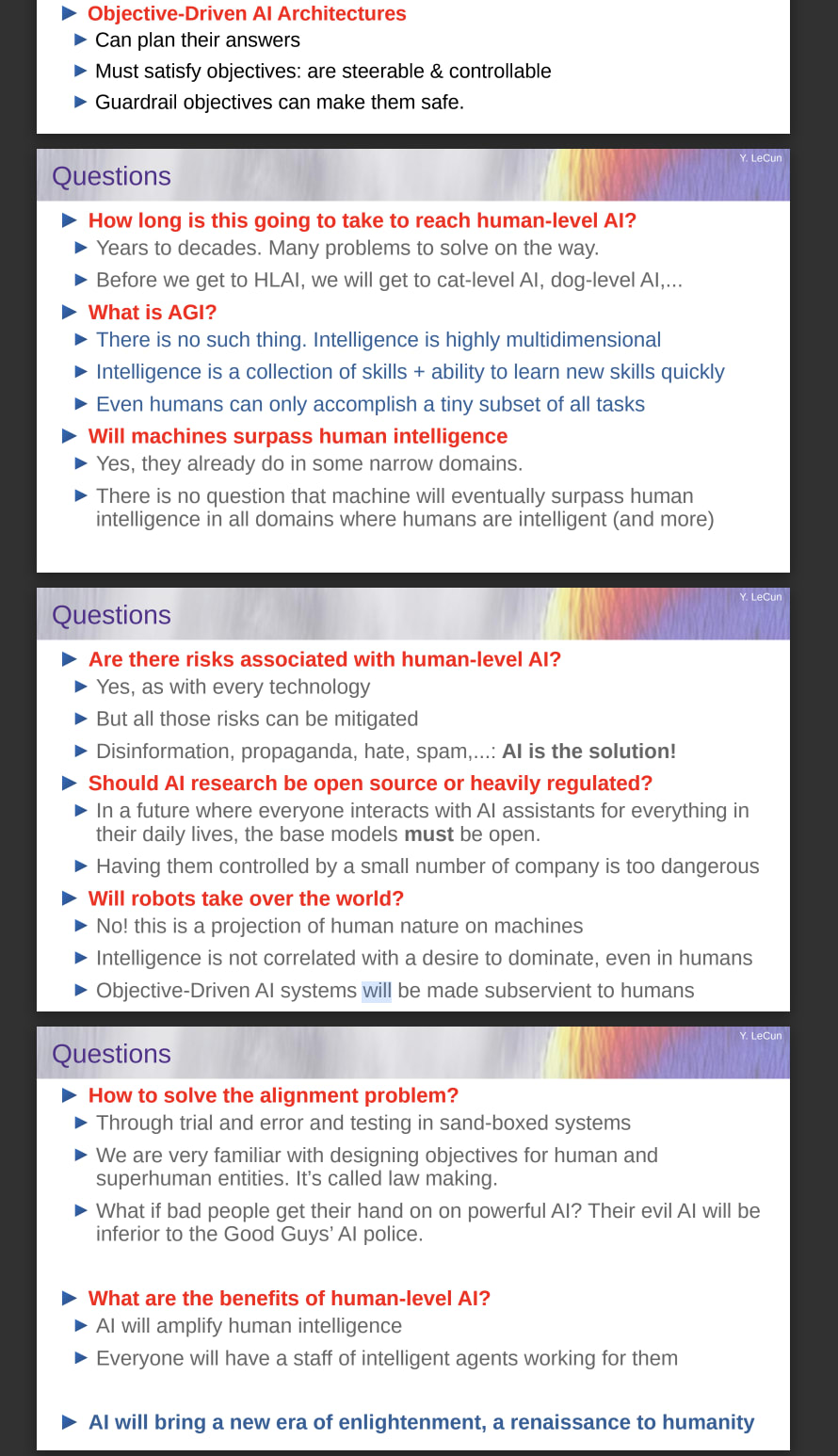Yann recently gave a presentation at MIT on Objective-Driven AI with his specific proposal being based upon a Joint Embedding Predictive Architecture.
He claims that his proposal will make AI safe and steerable, so I thought it was worthwhile copying the slides at the end which provide a very quick and accessible overview of his perspective:
Here's a link to the talk itself.
I find it interesting how he says that there is no such thing as AGI, but acknowledges that machines will "eventually surpass human intelligence in all domains where humans are intelligent" as that would meet most people's definition of AGI.
I also observe that he has framed his responses to safety on "How to solve the alignment problem?". I think this is important. It suggests that even people who think aligning AGI will be easy have started to think a bit more about this problem and I see this as a victory in and of itself.
You may also find it interesting to read Steven Byrnes' skeptical comments on this proposal.
